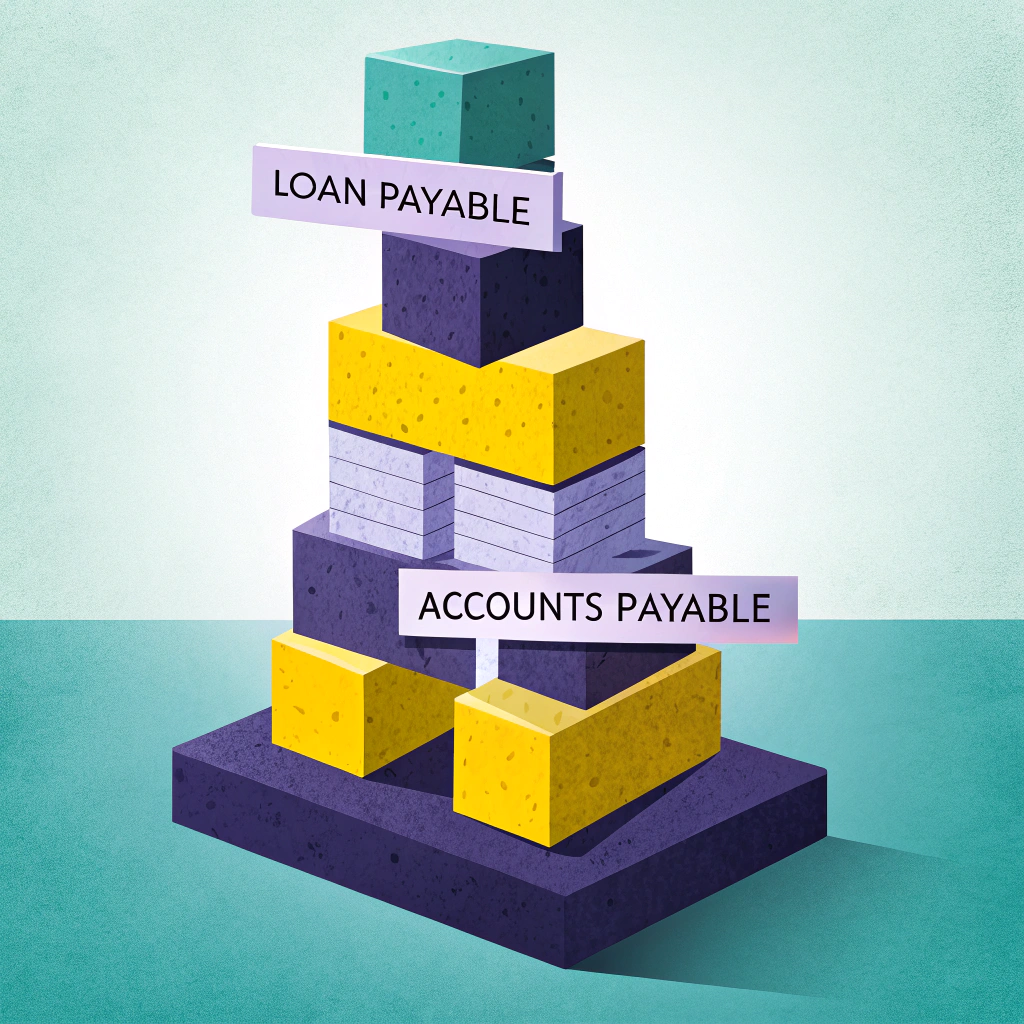Alright folks, let’s dive into the riveting world of liabilities! Wait, don’t roll your eyes just yet. Sure, liabilities might not be as exciting as a weekend getaway, but understanding them is crucial for anyone—from solo entrepreneurs to CEOs of mega-corporations. Liabilities come in all shapes and sizes, sneaking into balance sheets everywhere. In this adventure, we’re going to break down the different types of liabilities and dish out some juicy examples for each. So grab your favorite beverage (coffee, tea, something stronger—no judgment here), and let’s get this show on the road!
What are liabilities in accounting?
So, what’s the deal with liabilities in accounting? Glad you asked! Think of liabilities as your business’s IOUs—they’re the financial obligations you owe to others. These aren’t just friendly promises; they’re legal obligations stemming from past events or transactions. In plain English: money or services you owe someone else. They’re the flip side of assets—while assets are what you own, liabilities are what you owe. Fancy, right?
Liabilities aren’t just doom and gloom—they’re actually a vital part of how businesses finance their operations. Think of them as an alternative to shareholders’ equity. Some liabilities, like accounts payable or income taxes payable, are the unsung heroes keeping the wheels turning in your daily business grind. They’re recorded in the general ledger in special liability accounts (which, by the way, naturally have a credit balance—accounting magic!). You’ll find them hanging out on your company’s balance sheet, that all-important financial statement generated by your trusty accounting software.
Unless you’re operating a mythical cash-only business (and if you are, we’d love to hear how that’s going), every business has liabilities. If you’re dealing strictly in cash—paying and accepting only those crisp bills or direct transfers—you might dodge some liabilities, but let’s be real, that’s as rare as a unicorn sighting.
Liabilities, when handled with care, are like the secret sauce to organizing a thriving business and accelerating value creation. But mismanage them, and you’re setting sail on the Titanic—heading straight toward financial icebergs like declining performance or even bankruptcy. Not exactly a joyride.
Your balance sheet is split into three main sections: assets, liabilities, and shareholders’ equity. Think of it as a snapshot of your company’s financial health. The fundamental accounting equation that ties these together is:
Assets = Liabilities + Shareholders’ Equity
This means everything your company owns (assets) is financed either by borrowing money (liabilities) or by investing your own or others’ money (equity). Unlike assets—which are like the shiny toys you own—liabilities are the sources of funds, or how you paid for those toys in the first place.
Here’s the kicker: the liabilities your company takes on should ideally be offset by the value created from the assets you’ve acquired. In other words, you’re hoping that new piece of equipment you bought on credit will help you make more money than it cost. Fingers crossed!
For example, when a company takes on debt financing—borrowing capital from a lender in exchange for interest payments and returning the principal on the maturity date—that debt is a liability. It’s a future payment that will reduce your company’s cash. But in exchange, you get immediate cash to invest in assets like inventory or long-term investments like property, plant, and equipment (PP&E). It’s like fueling up for a long road trip; you spend now to gain later.
According to the accounting equation, if we rearrange the formula, we get:
Liabilities = Assets – Shareholders’ Equity
This means your liabilities are essentially what you owe after subtracting what you’ve invested yourself (equity) from what you own (assets). It’s like figuring out how much of your house is actually yours versus what the bank still owns.
Now, here’s where things get a tad more formal (don’t worry, we’ll keep it light). Liabilities need to be reported according to accepted accounting principles—think of them as the rules of the financial road. The most common standards are the International Financial Reporting Standards (IFRS), used in many countries worldwide, and the Generally Accepted Accounting Principles (GAAP) in the United States. While they might have their quirks, the main principles are pretty similar.
Liabilities are listed on the balance sheet based on when they’re due. It’s like organizing your to-do list by deadlines. Short-term liabilities are due within a year, and long-term liabilities are due after that. We’ll dive into these types in a bit, so stay tuned!

Related: Common Stock: Asset or Liability?
General Liabilities Examples
Still with us? Awesome! Let’s make this whole liabilities thing crystal clear with some real-world scenarios:
The Cabinet Conundrum: Imagine you’re a carpenter crafting beautiful kitchen cabinets. You’ve got a great relationship with your supplier, who lets you buy materials on credit (sweet deal!). You pick up some fancy new cabinet doors, and the supplier hands you an invoice due in 30 days. That invoice? Yep, it’s a liability. You’ve got an obligation to pay up within the month.
The Tax Time Tango: Picture a freelance social media marketer rocking her clients’ online presence. She’s required by her state to collect sales tax on each invoice she sends out. The money sits in her bank account, but don’t get too excited—that cash isn’t hers to keep. It’s a liability because she’s obligated to send it to the state at the end of the month. Sorry, no extra lattes with that money!
The Dog Walker’s Debt: Let’s say you own a dog-walking business with ten energetic employees. It’s Monday, and you’re due to pay $2,000 in wages by Thursday. Even though payday isn’t here yet, that $2,000 is a liability on your books. Time to fetch those payments!
The Freelancer’s Fancy Purchase: A copywriter decides to splurge on a new laptop for $1,000 using her business credit card. She plans to pay it off over the next three months. That $1,000 owed to the credit card company? Another liability. But hey, at least she’ll be typing away in style!
The Bookseller’s Big Move: An online rare bookseller decides it’s time to open a physical store. He takes out a $500,000 mortgage on a charming commercial space. This mortgage is a long-term liability since it’s a debt that won’t be paid off anytime soon. Here’s hoping those first editions fly off the shelves!
See also: Capital Market Instruments, Examples, and Types

Types of Liabilities
Liabilities come in different flavors, and understanding each type helps you manage them like a pro. Let’s break them down:
- Long-term or Non-current Liabilities
- Short-term or Current Liabilities
- Contingent Liabilities
Note: The third type, contingent liabilities, can be either long-term or short-term, depending on the situation. Think of them as the wildcard entries on your balance sheet.
Long-term Liabilities
Long-term liabilities, also known as non-current liabilities, are financial obligations that aren’t due within the next 12 months. They’re the marathon runners of the debt world. Companies often take on long-term debt to fund big projects like purchasing equipment, investing in new technology, or expanding operations. It’s like taking out a mortgage to buy a house—you’ll be paying it off for a while, but it’s meant to add value over time.
These liabilities are crucial in assessing a company’s long-term financial health. If a company can’t meet its long-term obligations, it could face solvency issues—a fancy way of saying it might go belly up. Analysts love to use financial ratios involving long-term liabilities to gauge risk and stability.
Long-term liabilities are listed on the balance sheet after current liabilities. They include things like loans, bonds, deferred tax liabilities, and pension obligations. Now, let’s dive into some examples.
Long-term Liabilities Examples
- Loan Payable/Long-term Notes Payable
- Bonds Payable
- Deferred Tax Liabilities
- Mortgage Payable
- Capital Leases
- Debentures
- Pension Obligations
Loan Payable/Long-term Notes Payable
These are debts your company owes that are due in more than one year. Think of them as the bank loans or notes you’ve signed promising to pay back over time—usually used to buy assets like equipment or vehicles. They’re called “long-term” because, well, they’ll stick around longer than your New Year’s resolutions.
Bonds Payable
Bonds payable represent the amount owed to bondholders by the issuer (that’s you if you’ve issued bonds). It’s like borrowing money from a crowd of investors instead of a bank. You’ll pay them interest over time and return the principal amount when the bond matures. Bonds typically have longer terms, making them a staple in the long-term liabilities section.
Deferred Tax Liabilities
Deferred tax liabilities are taxes you owe but don’t have to pay until a future date. They’re like the taxman’s IOUs. These arise due to timing differences between when income or expenses are recognized for accounting purposes versus tax purposes. It’s a bit like knowing you have to pay taxes on April 15th but already accounting for it in the previous year’s books.
Mortgage Payable
If your company owns property with a mortgage, this is where it’s recorded. A mortgage payable is the amount you owe on that property. The portion due within a year is considered a current liability, while the rest is a long-term liability. It’s like your personal home mortgage but on a potentially much larger (and scarier) scale.
Capital Leases
Capital leases are long-term lease agreements where you essentially assume the risks and rewards of owning an asset. In accounting terms, it’s treated like you’ve purchased the asset, even though you’re technically leasing it. Think of it as renting with benefits. These leases show up as both an asset and a liability on your balance sheet.
Debentures
A debenture is an unsecured loan certificate issued by a company, backed by general credit rather than by specified assets. It’s like telling investors, “Trust me, we’re good for it.” Debentures are ideal for companies with solid credit that want to avoid diluting equity. Higher risk for investors means they often come with higher interest rates.
Pension Obligations
Pension obligations are the promises you’ve made to pay your employees after they retire. It’s a long-term liability calculated based on factors like employee salaries, years of service, and life expectancy. Managing pension obligations is crucial—unless you want a mob of disgruntled retirees at your doorstep.
Short-term Liabilities Examples
Short-term liabilities, or current liabilities, are obligations due within one year. They’re like the sprint runners—they need quick attention. Managing these is all about liquidity: making sure you have enough cash or assets that can be quickly converted to cash to pay off these debts.
Analysts use liquidity ratios like the current ratio or the quick ratio to assess a company’s ability to meet its short-term obligations. A healthy ratio usually indicates good financial standing.

Current Liabilities Examples
- Accounts Payable/Bills Payable
- Interest Payable
- Income Taxes Payable
- Bank Account Overdrafts
- Accrued Expenses
- Short-term Loans
- Sales Tax
- Payroll Taxes
- Taxes on Investments
- Prepaid Income
- Salaries and Wages Owing
- Insurance Payable
- Dividends Payable
- Current Maturities of Long-term Debt
Accounts Payable/Bills Payable
These are amounts you owe to suppliers for goods or services you’ve received but haven’t paid for yet. It’s like running a tab at your local coffee shop—enjoy now, pay later. Keeping track of accounts payable is crucial to maintain good relationships with your vendors. Nobody likes a late payer!
Interest Payable
Interest payable is the amount of interest you’ve accrued on debts but haven’t paid yet. If you’ve taken out loans or issued bonds, you’ll have interest to pay. This liability shows how much interest expense has accumulated since the last payment. Remember, the meter’s always running with interest.
Income Taxes Payable
This is the amount of income tax you owe to the government but haven’t paid yet. It’s calculated based on taxable income and current tax laws. Just like personal taxes, business taxes can’t be ignored—Uncle Sam always gets his due.
Bank Account Overdrafts
An overdraft occurs when you’ve spent more money than you have in your bank account, and the bank covers the shortfall. It’s like borrowing money without formally asking, but with fees attached. Overdrafts are short-term liabilities that need to be addressed quickly to avoid hefty charges.
Accrued Expenses
These are expenses that have been incurred but not yet paid. Think of utilities you’ve used but haven’t received a bill for yet. They are recorded to reflect the company’s obligation to pay for services or goods already received. It’s all about matching expenses to the correct accounting period—accounting 101!
Short-term Loans
Short-term loans are debts due within one year. Businesses often use them to cover temporary cash flow gaps. They’re like financial band-aids—useful in the short term but not a long-term fix. Be mindful of interest rates; they can be higher than long-term loans.
Sales Tax
If you’re selling goods or services, you’re likely collecting sales tax from customers. This money isn’t yours to keep; it’s owed to the government. Until you remit it, it’s a liability on your books. Remember, the taxman waits for no one.
Payroll Taxes
Payroll taxes are the amounts you’ve withheld from employees’ paychecks for taxes, along with your own contributions as an employer. These funds are owed to tax authorities and must be remitted promptly. Late payments can result in penalties—ouch!
Taxes on Investments
If you’ve earned income from investments, there may be taxes owed on those gains. Until you pay them, they’re considered a liability. Keeping track of investment income and related taxes is essential to avoid surprises come tax season.
Prepaid Income
Also known as unearned revenue, this is money you’ve received before delivering the goods or services. It’s like a customer paying in advance. Until you fulfill your end of the bargain, it’s a liability—a debt of services owed.
Salaries and Wages Owing
This represents the amount you owe employees for work they’ve already done but haven’t been paid for yet. Timing differences between pay periods and accounting periods often create this liability. Happy employees are paid employees!
Insurance Payable
Insurance payable is the amount owed to insurance companies for coverage received. If you’ve got insurance policies (and you should), any unpaid premiums are liabilities. It’s like paying for peace of mind—don’t let it lapse!
Dividends Payable
Dividends payable are the amounts you’ve declared to distribute to shareholders but haven’t paid out yet. Once declared, they become a legal obligation. Shareholders will be eagerly awaiting their share, so don’t keep them hanging.
Current Maturities of Long-term Debt
This is the portion of your long-term debts that are due within the next year. It’s like the upcoming installment on your mortgage or car loan. Knowing this amount helps you plan for imminent cash outflows.
Contingent Liabilities Examples
Contingent liabilities are the “maybe” debts—they depend on the outcome of a future event. They might occur, they might not. It’s like Schrodinger’s debt. Two conditions must be met for a liability to be considered contingent:
- The outcome is probable.
- The amount can be reasonably estimated.
If you’re reasonably sure both conditions are met, the contingent liability should be recorded on the balance sheet. If not, it’s typically disclosed in the footnotes. Transparency is key.
Examples of Contingent Liabilities in Accounting
- Lawsuit/Legal Liabilities
- Warranty Obligations
- Non-operating Liabilities
- Product Liability Claims
Lawsuit/Legal Liabilities
If your company is involved in litigation and it’s probable you’ll lose, the estimated loss should be recorded as a liability. It’s like setting aside bail money—you hope you won’t need it, but better safe than sorry.
Warranty Obligations
When you sell products with a warranty, you might incur costs to repair or replace defective items. The estimated cost of fulfilling these warranties is a contingent liability. It’s all about keeping customers happy, even when things go wrong.
Non-operating Liabilities
These are potential obligations that aren’t related to your core business operations. For example, environmental cleanup costs due to an accident. They’re contingent because they depend on future events, like regulatory fines or litigation outcomes.
Product Liability Claims
If there’s a chance your product could cause harm and lead to lawsuits, you might have a contingent liability. Estimating these costs can be tricky, but acknowledging them is important for financial transparency.
See also: Accumulated Depreciation on Balance Sheet
Takeaways
Understanding liabilities isn’t just for accountants—it’s essential knowledge for anyone involved in running a business. From managing day-to-day operations to planning for the future, knowing what you owe (or might owe) helps you make informed decisions. So next time someone brings up liabilities at a party, you can impress them with more than just small talk. Or, you know, you can change the subject. Your call!
